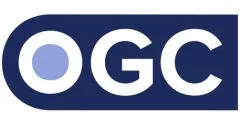A few days ago, one of my partners passed along an article from Bloomberg Law's Ray Strom titled "Less Work, More Money: Big Law Associates Never Had it Better." In the article, Strom noted that Big Law associates are working less and getting paid more than ever. Folks who have operated a business may wonder how it's possible to pay more for less productive employees, but it's actually quite simple—as associate productivity has declined, firms have maintained (and in some cases, increased) profitability by passing rate increases along to clients. The strategy may be effective in the short term, but it raises serious questions about the true cost of legal services and highlights a stark contrast with our approach at OGC.
Here's a closer look at the dynamics in play:
- Diminishing Productivity, Rising Rates: According to Strom's article, average annual hours billed by lawyers at the 100 largest law firms has dropped nearly 8% from its record high in 2021. Despite this trend, first year associate compensation has risen and, while there have been targeted reductions, top law firms have not generally had significant layoffs. Instead, firms have more than made up for the loss in productivity by passing along rate increases to their clients. Indeed, Strom notes that after the rate increases "the less-busy, more-expensive 2023 associate generates about 6.5% more revenue . . . than the harder-working, less-paid 2021 associate . . . ." Big Law firms have no incentive to effectively manage the costs of their business because they pass those costs along to their clients.
- Client Impact and Value Proposition: You have to hand it to Big Law—it has structured a business model such that profits are up even though productivity is down. And it gets better—the consistency and scale of the rate increases means that if productivity ever again reaches 2021 levels, every incremental dollar drops straight to the partners' pockets. Clients, however, obviously bear the brunt of these rate increases, facing higher costs for legal services without any measurable improvement in service or value. It doesn't seem like a good trade.
- A Different Approach: In contrast to Big Law, OGC offers a different paradigm. The firm's practice model is predicated on the belief that in-house lawyering is better for business, pairing former GCs and senior in-house lawyers with clients based on their particular needs. As a result, our lawyers take a business-oriented approach to problem solving that is more practical, responsive and efficient than traditional firms. And OGC's profitability isn't dependent on leveraging associate attorneys because we don't have any. Our partner-only model allows us to work much more efficiently on behalf of our clients and pass the savings along to them.
- The Future of Legal Services: As the cost of legal services continues to outpace the rate of inflation, clients are increasingly seeking alternatives to the traditional law firm model. OGC represents a paradigm shift—one where clients receive top-notch legal support without sacrificing value or efficiency. By embracing this innovative approach, clients can navigate the complexities of the legal system with confidence, knowing that their needs are prioritized above all else.
The traditional law firm model's reliance on passing rate increases onto clients highlights the need for a new approach to legal services. OGC offers a compelling alternative—one where sophistication, value, and efficiency come together to deliver an exceptional experience for our clients.
The content of this article is intended to provide a general guide to the subject matter. Specialist advice should be sought about your specific circumstances.

